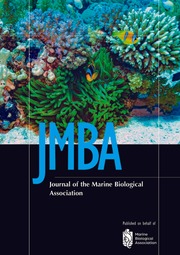No CrossRef data available.
Article contents
Application of a national monitoring approach for an initial assessment of the current distribution of marine invertebrate protected by the Habitat Directive (92/43/EEC) along the Italian coasts
Published online by Cambridge University Press: 04 April 2025
Abstract
The distribution pattern of species and habitats protected by the Habitat Directive is one of the main parameters used to assess their conservation status. According to the European guidelines, the assessment must be carried out at a biogeographical scale by implementing monitoring activities. The results of a national monitoring programme conducted on five invertebrates during the last reporting cycle (2018–2024) are presented and discussed. Monitoring activities on Patella ferruginea, Pinna nobilis, and Lithophaga lithophaga were performed using on a spatial design based on Italian administrative regions, whereas Scyllarides latus and Centrostephanus longispinus were surveyed within six marine protected areas (MPAs) representing the different Italian marine subregions.
The most critical situations, due to different reasons, were observed in the distribution pattern of P. ferruginea and P. nobilis, which were confined to few areas with very small populations. Data on the distribution of L. lithophaga, collected by assessing the quality of the habitat for the species, indicate the persistence of illegal fishing activities, at least in some of the areas investigated. The use of ‘opportunistic’ methodologies, typical of citizen science, to collect semi-quantitative data on the distribution of C. longispinus and S. latus in the six MPAs, chosen to conduct this type of monitoring, confirmed the effectiveness of this approach. Some differences in the number of individuals recorded emerged among MPAs for both species, likely due to an uneven sampling effort. Overall, our results revealed significant interspecific differences linked to intrinsic and extrinsic factors, providing valuable insights into the vulnerability of the investigated species.
- Type
- Research Article
- Information
- Copyright
- © The Author(s), 2025. Published by Cambridge University Press on behalf of Marine Biological Association of the United Kingdom.


